-
Posts
240 -
Joined
-
Last visited
Posts posted by Erkan Umut
-
-
Does anyone have the Optasound 116R instruction manual?
Would it be possible to scan it at high resolution. Will have it printed out.
Sincere thanks!
-
We are probably dealing with a prototype camera or a camera produced in very small quantities! I searched all my databases and never come across this model.
I think the GOIF went bankrupt in 2007.
-
On 7/17/2024 at 6:21 PM, Jason Lu said:
No, can't find any information about it, only know it's made by GANSU OPTICAL INSTRUMENT FACTORY
Hi Jason,
That's correct! Gan Guang brand and totally an ACL knock-off. Probably made after 1980. Will find more info for you...
That factory also made ELMO-16CL projector knock-off. Gan Guang GF-100/101/102: https://www.flickr.com/photos/wise-man/43849443384/in/album-72157710336572487
The one you found online SX16K was made by AVM (Qinhuangdao Audio-Visual Machinery Research Institute).
Also a similar design ST-16 was made by JOC (Jiangxi Optical Complex-Jiangxi Optical Instrument General Factory)
Some info on my Blog: https://sayyes2analog.wordpress.com/2015/07/18/prc-cam/
Hope this helps for now.
Best,
Erkan
-
-
On 2/5/2023 at 7:16 PM, Boris Belay said:
BTW, I'm not sure what you mean in this particular context by 'phasing' or 'phase function', which has to do with syncronising two cycles together. But in case somebody visits this thread hoping to find out something about phasing on the ACL, it is indeed a function that was built into the electronics of the ACL II (and only the ACL II).
Its called Phase Shifting.
I was used to use that feature extensively in my works. Arriflex 16BL with BLEQ motor and 16SR/SRII need an external accessory (PHU) for controlling. SR3 doesn't need, however you can use the external synchronization unit ESU-1.
As you mentioned, the BOTEX unit was intended for the ACL II.
-
Hi everyone,I recently got a CHINON 877 MACRO.If you have its instruction manual along with illustrated figures, I'd be glad if you could scan it at 300dpi color.Sincere thanks for your effort and time!
-
As you know, the beam splitter of Bolex Reflexes have a thicker pan prism. That's why Bolex reflex lenses are differs in design.
Also, 16ST (16S) utilize two-blade shutter, which, in turn, enables to run it at half the speed. So, to eliminate the flicker causing, the mirrors on the blades have symmetrical black stripes providing extra black outs.
-
I am fixing some old sales literature found on the archive org.
I need a high-resolution photo of the ACME printer model 102, taken from the same viewpoint, seen below.
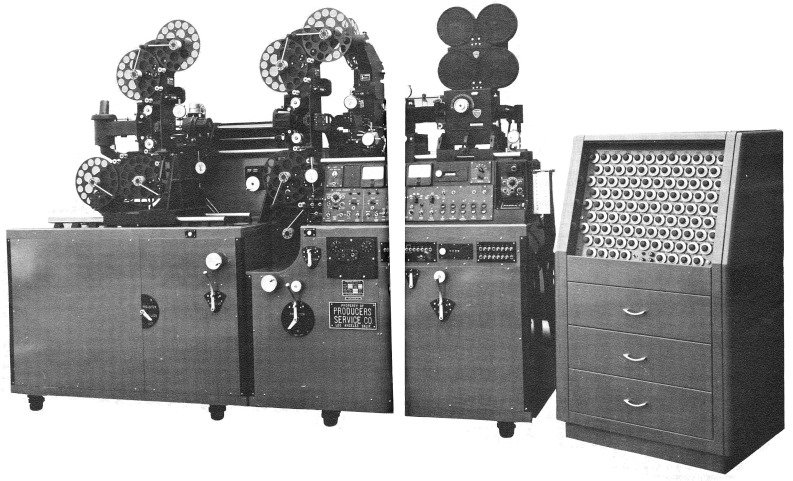
As you see, the middle part was lost due to improper photographing.
I have found the same in an advert online, but it doesn't fit to my page resolution. (At least 300dpi will work.)
Thank you!
-
The manual for MAGNON was found:
Magnon HF-880 DUOTRACK projecteur - mode d'emploi 31 pages FRA GBR DEU ESP 4732kb
-
On 9/10/2019 at 10:22 PM, Martin Baumgarten said:
(Svema B&W and others were discontinued by 1991/1992)
Dear Martin,
SVEMA, Shostka and TASMA, Kazan had continued to made light-sensitive and magnetic tape materials right after the dissolution of the Soviet Union. SVEMA also made OEM manufacture for a while.
There was a huge demand for 16mm color reversal stocks by TV stations in the former republics other than Russia since the video systems were obsolete (mainly LOMO equipment) or not available yet. Not to mention the other types of materials in various formats for studios and archival news gathering purposes. Imported stocks were few and available to the bigger privileged enterprises like MOSFILM, ORT (State-run CHANNEL 1), etc.
I was a technical manager at a company, which also operates a film lab, and in connection with those manufacturers to import raw stock for budget film productions here in Turkey. However, it was so difficult to deal with them for business as the activity of the foreign trade enterprise responsible for chemical exports in Moscow was stopped (turmoil).
Then I have been in many republics to find stocks the lab needs. I bought a very good Russian book about processing Soviet films since I can read Russian. Here we were stopping the reversal process of the 90 GOST Tungsten color reversal (Och-90L) in the first step to get negative results only with the native EI decreased.
SVEMA in the early 90's had made a color negative that can be processed with the ECN-2.
All the Best,
Erkan
-
 1
1
-
-
Hallo Andreas,
hab ich die Anleitung.
Muss man scannen erst.
Grüsse an Salzburg!
Erkan
-
Dear Forum Members,
I am currently looking for the instruction manuals of these Super 8 sound projectors:
RICOH HI-SOUND 1200M
MAGNON HF-880 Duotrack
Could someone provide me with the scans.
Sincere thanks for your attention!
Best,
Erkan
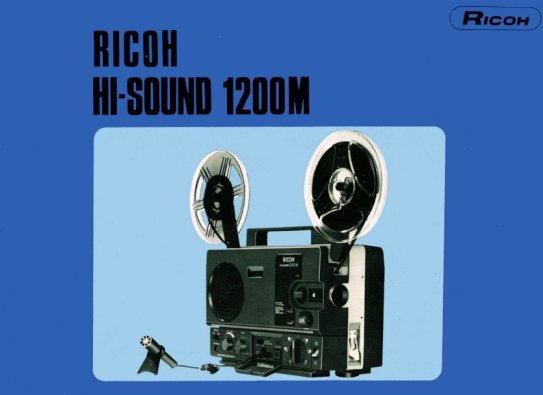
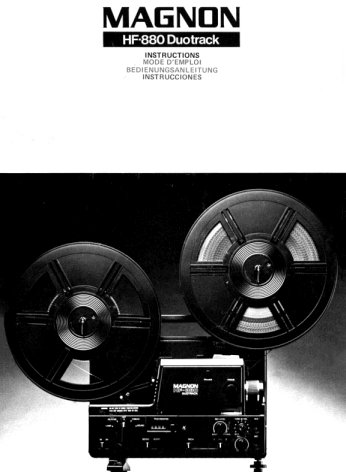
-
-
Finally, enjoy!
Thanks to Mark Gulbrandsen, Grant Loucks of AGE and Jonathan Froes
-
Sure August!
-
6 hours ago, Mark Dunn said:
Learn French!
I collect documents for almost 40 years. I don't need a manual for operating a simple camera, hence I can easily understand French.
I speak German and Russian, its well enough to read beautifully written technology books in the field.
I am a retired Prof. of Cinematography, technical consultant, and a DoP.
-
Hi August,
Unfortunately not. ?
I have originals but not in English.
All the Best
-
Stable image definition may be notional. To what extend?
If you need rock steady images to be screened on a big screen (assuming the print and projection quality within the given standards) or conventional SFX work, then it really matters.
That's why you gonna see image steadiness data is given generally, and engineers were designed complex and quite expensive mechanisms, as well as near impeccable machining and workmanship were required, to achieve that.
Otherwise, I am free to say: I had a Nikon R10 camera with an excellent lens mounted and the resulting images were stable.
-
Guys, I had a Beaulieu R16 (later donated to a museum here), which I did a steadiness (registration) test on it in the 90s with fine results as far as I remember.
It may be unfair to compare the semi-pro cameras with the pro ones mentioned above I think.
Doiflex 16 made by DOI Seisakusho was aimed at a reasonable-priced camera, there was no need to put a complex intermittent mechanism like in the Arriflex 16S/St , M and BL. It was well enough to utilize a simplified mechanism having two cams opposite each other and inside of frames as the followers. The one gives a sinusoidal pull-down movement while the other lateral for the registration pin. But the rest is similarly designed as 16S/St. At first, it was accepting 100ft da-lite spools and a 400ft. magazine provision was planned by modifying the camera top at the factory. However never became a reality. Also, it has a guillotine reflex mirror not a shutter, its shutter is focal. Very helpful for quick pans handheld to eliminate the stroboscopic effect.
-
I am looking for the Yashica 8P3-RS manual.
I'd be glad, if someone would share the scans.
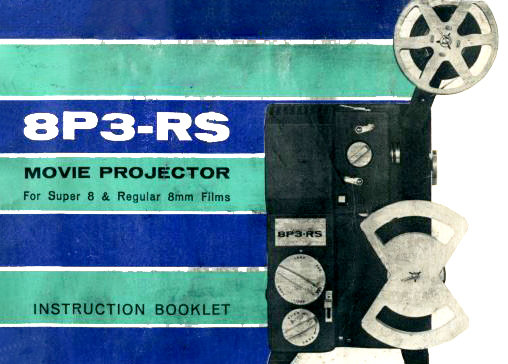
-
Dear Members,
I am looking for the ELMO CINEMATIC SOUND DR-1 and SYNCHRO SOUND SA-1 manual scans. SR-1 and A-1 will be also helpful, I think.
Any help is highly appreciated!
Erkan
-
-
Dear Members,
I am looking for an English-language manual for Beaulieu 2016 Quartz.
Scans will be highly appreciated.
Sincere thanks!
-
Dear Members,
I am looking for the scans of the Canon Canosound PS-1000 instruction manual.
Could be in any language.
Thanks a lot for your attention!



.thumb.jpg.32a8ef180f0966e046cc1cf4d178ccdf.jpg)


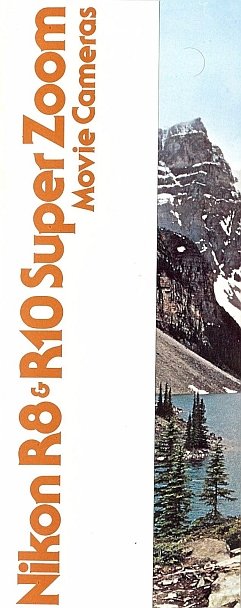
Technical Details EUMIG C 16
in 16mm
Posted
https://www.vintagecameras.fr/images/MonSite/EUMIG/C16/_Doc/Eumig_C16_Manuel_en.pdf